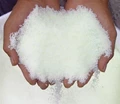
According to data, the government imported 74.86 lakh tonnes through March 24 of the current fiscal year. Imports of urea totaled 91.36 lakh tonnes in fiscal 2021-22, 98.28 lakh tonnes in 2020-21, 91.23 lakh tonnes in 2019-20, and 74.81 lakh tonnes in 2018-19.
"It can be seen from the above table that urea imports climbed from 2018-19 to 2020-21, but fell in 2021-22 and 2022-23," Khuba explained.
On August 1, 2021, IFFCO began commercial production of nano-liquid urea. The production of nano urea was 290 lakh bottles (500 ml each) last fiscal year and 452.11 lakh bottles up to March 21 this fiscal year.
According to S Nand, FAI Director-General, the cost of fertiliser imports would rise further as a result of the Ukraine crisis and the obstruction of supply chains from Russia, among other factors.
"For the kharif season, we are not overly reliant on imports, and I do not anticipate a significant shortage of fertilizer. The fertilizer situation varies from year to year and is affected by crops," he added.
Current import markets for Di-Ammonium Phosphate (DAP) - Jordan, Morocco, and Senegal - can be expanded to compensate for difficulties in purchases from Russia and Ukraine, despite the fact that only minor quantities of DAP are purchased from these two countries.
In the case of urea, domestic output is already being increased by allowing current manufacturing units to produce more while also opening new urea facilities.
















